By Max Milano (Travel Writer)
Morning is quiet and thick with mist. After nearly a month on the Road to Santiago, it feels like forever. My feet sink into the cold water of a Galician ría, eyes fixed on the fjord-like channel ahead until it vanishes into fog.
The pines across the ría blur between green and gray, their slopes hidden by a drifting veil of fog that slides down to the waterline. Coastal Galicia is a land of rías. They begin as muddy flats and widen into long, narrow bays that are briny and alive with clams, crabs, and the hush of tides.
I wade deeper. The bottom is so clear you can see bubbles popping out of the mud. It’s the razor clams breathing from deep inside their muddy homes. Black crabs dart and vanish. I dive. The water looks cruelly cold, but not too bad in August. I float on the surface, watching the mist ride above the water as the ría bends in 90 degrees toward the ocean, still far away.
These rías carve north and west Galicia into peninsulas. They look thin on the map but are wide in real life. Their spines are high ridges of forest, stone, and fog, keeping villages apart. Their tips are ragged capes crowned by lighthouses and tired fishing towns. To reach them can take over an hour on winding roads that disappear into pines and mist. Green rules here, and the fog makes the landscape dreamlike. You’ll drive past a ruined farmhouse, drowned in moss, then forest again, then a village clinging to a cape, stubborn against the sea.
This blog has affiliate links
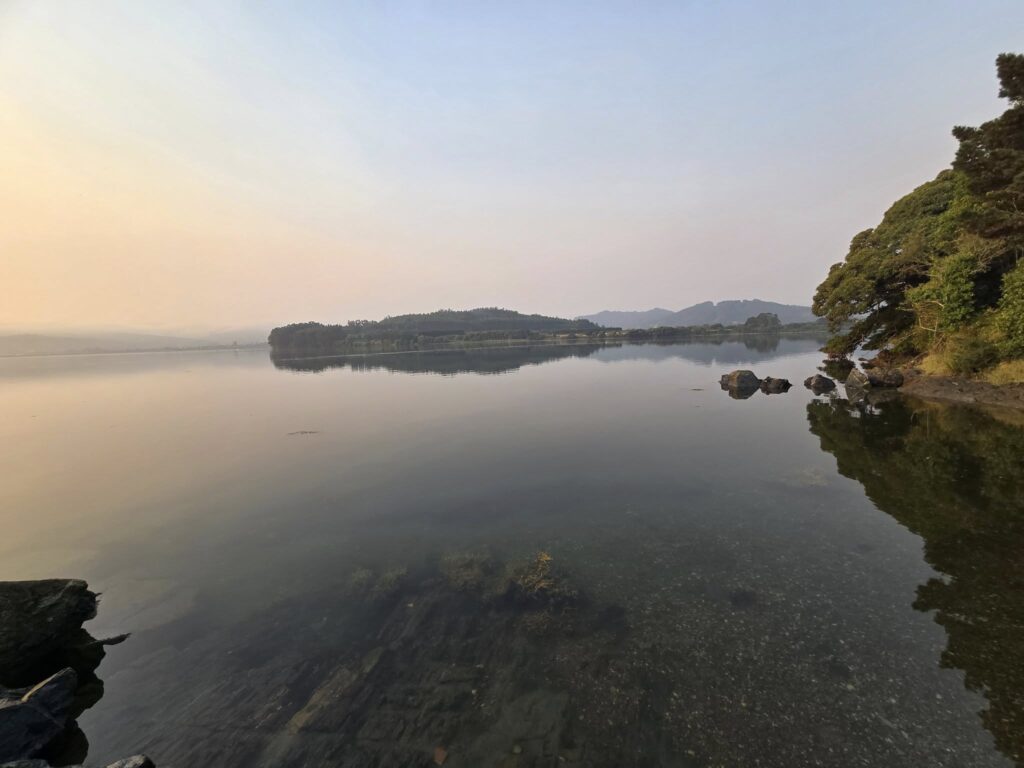
Sadness seeps through these Galician peninsulas. It lingers in the villages, the forests, the sea air. Our hotel is the only one in town. More of a roadside crossroad than a town. The man at the desk is a giant. Broad and heavy, with a Galician accent thick as churned butter. I recognize his voice as the same voice that answered when I called yesterday to book the room. Only he isn’t at the desk much. He’s mainly in the kitchen, baking bread for the bar. We’d pulled him away from the dough.
“You’ve caught me with my hands in the dough,” he says, voice soft, sad. Thick with Galician brogue.
On the wall hangs a photo of him at fifteen. A boy flanked by his parents. Parents gone now. You look at the portrait and think maybe the boy once dreamed of escaping this town. Of a life away from baking bread and serving drinks to the habitual drunks who haunt the bar. But fate kept him here. Between the kitchen, counter, and bar. A circle with no end but death.
There are many men like him in Galicia. We keep running into them. In the small hotels. Manning bars serving crusty geriatric alcoholics that turn up at dawn and stay till closing time. Men with nowhere else to go.
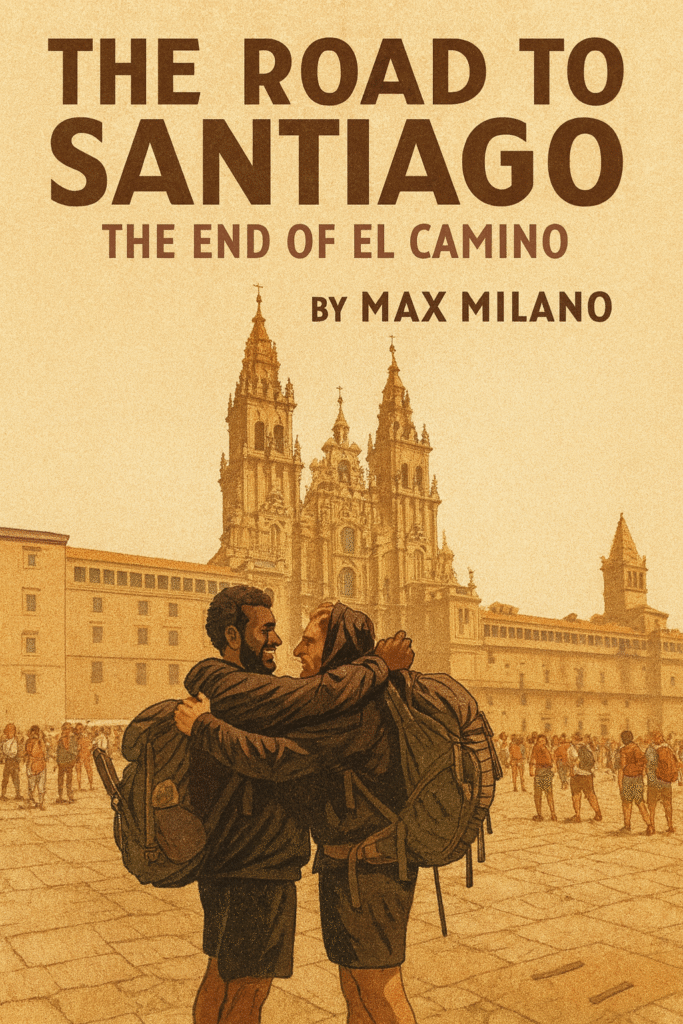
Northern Exposure
After the swim in the ría, we head north. North until the road ends. The northernmost cape in Spain. Bares.
The road twists through forests and clouds. Then sheer cliffs with the crashing ocean below. A lighthouse juts into the sea. No more road north. Only wind and rocks. South is the only way left.
Behind the cape is the town of Bares. A town with one bar but named in the plural. Whitewashed houses cling to a high ledge, divided by a narrow road. The ocean is on three sides, at the bottom of sheer cliffs.
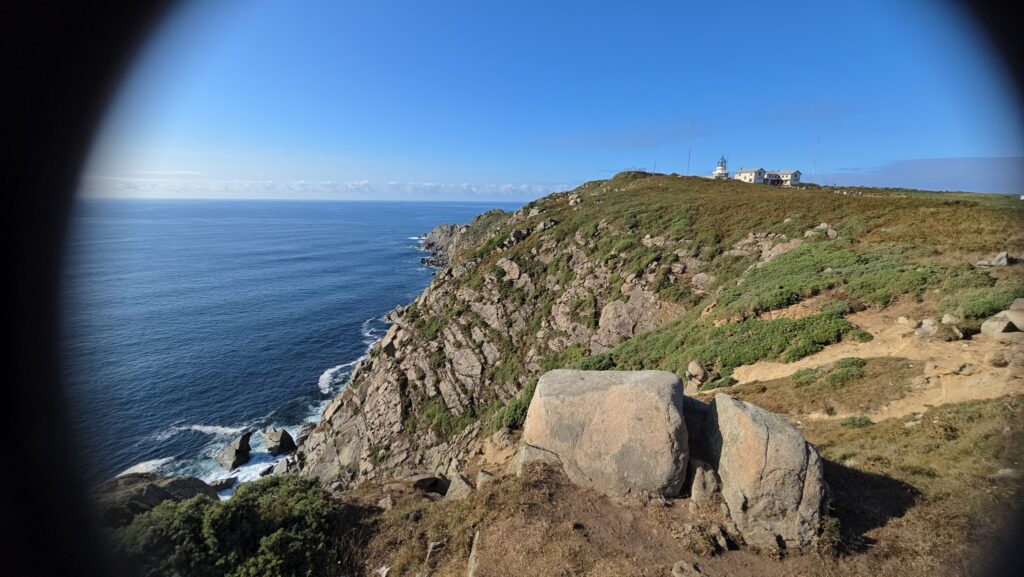
We step into the bar. They have 1906 on tap. The barmaid is a feisty Andalucian woman and no shrinking violet. She’s speaking in her Andalucian Spanish to the Galician crusties that cling to the bar like barnacles. The drunken crusties speak Galician among themselves and to the barmaid, and look like they just stepped off a fishing boat.
The town feels like the waiting room at the end of the world. A place where a writer could hide in one of its cottages and write with the ocean on three sides. Nothing to do but hit the bar during writing block. Write drunk, edit sober, Hemingway said. Bares could deliver both in profusion until cabin fever drives you south. South to Viveiro, the only large town in Northern Galicia of significance. Our next stop.
Viveiro: Queen of the North
The road winds down from Bares to Viveiro. It’s gray and overcast when we arrive. The town is split by a ría, crossed by a medieval bridge. Viveiro is a town of stone and moss that climbs steeply from the water up into mist and pine forests up on a ridgeline. Creeks tumble down the hill, feeding old washing houses where women once beat clothes against stone.
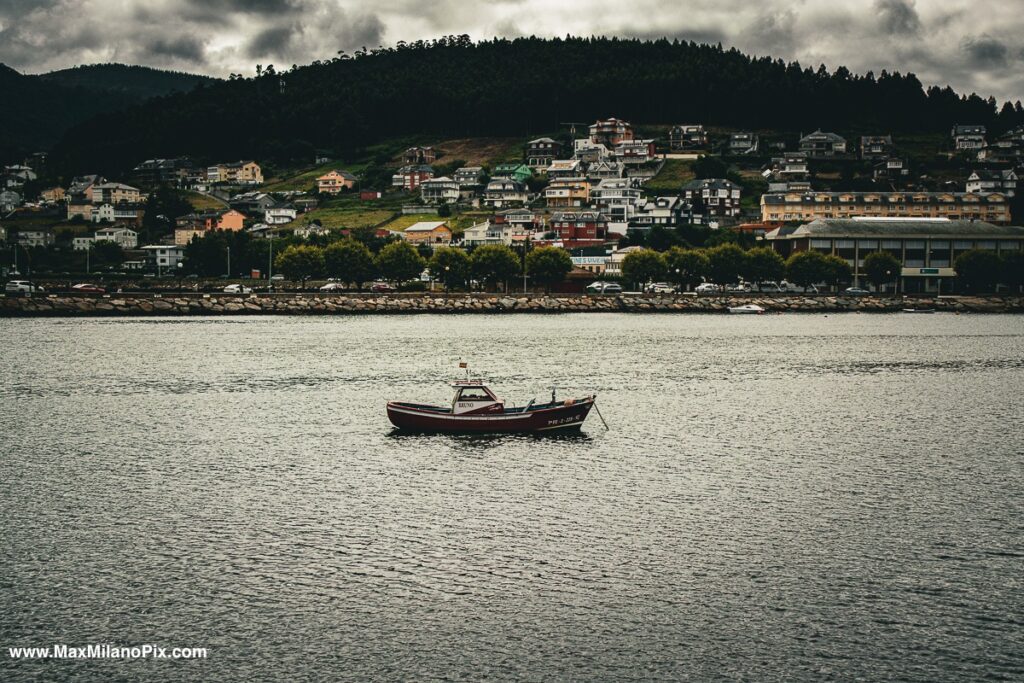
There’s a small plaza by the medieval gate. Bars ring the square. Families fill the tables. Children run wild while parents drink beer and coffee.
On the stage, a man plays bagpipes. The sound wails, old and sad. A band joins him. Guitars. A young woman sings in Galician. Families join her, their voices soft, proud.
Castilian is the tongue of a distant land. Here they sing and live in Galician. Celts who speak a Latin language. The past is written in their faces. The sound of a nation perpetually in mourning until very recently, now enjoying the mists and fairs of August as the rest of the Iberian Peninsula burns.
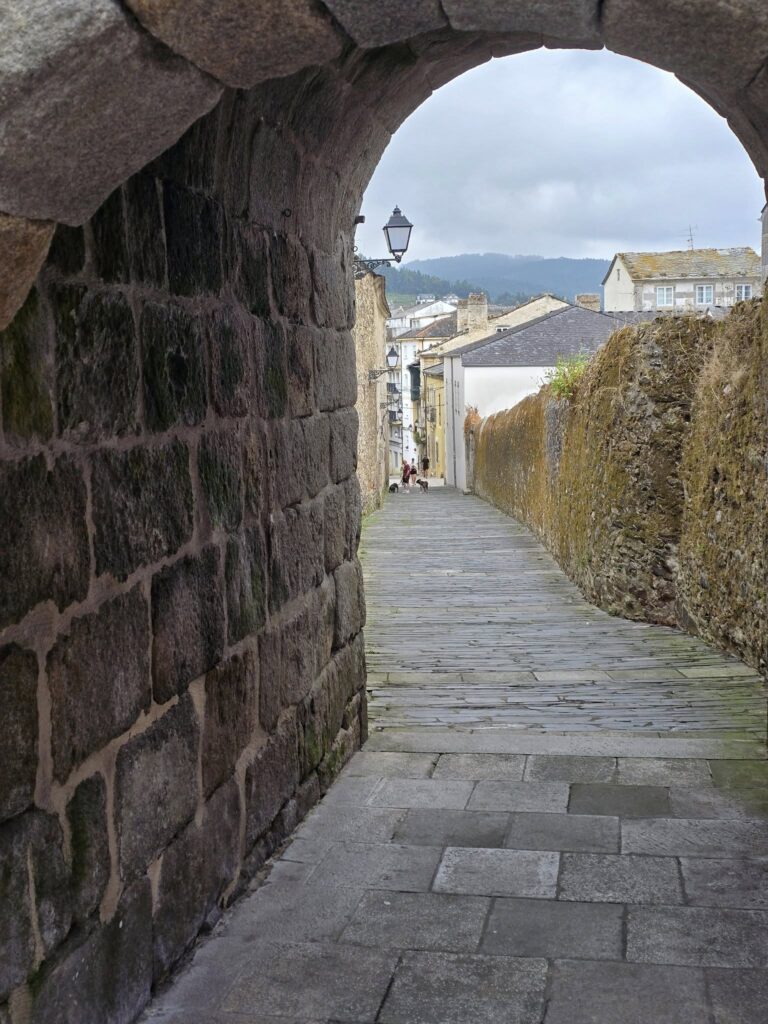
The Hill of Joy: Last Night Before Compostela
It’s a long drive from Viveiro to Monte do Gozo, the Hill of Joy, named so because it was the first hill from which pilgrims on El Camino de Santiago could see the spires of the Santiago de Compostela Cathedral. There’s a hotel on this hill now. The Monte de Gozo Hostel. More of a holiday camp for nerdy Catholic girls to have one last night of what they would consider “wild” on their Camino journey. The Monte do Gozo hotel is a sprawling campus of bunk bed dorms and private rooms, spread along green, rolling hills.
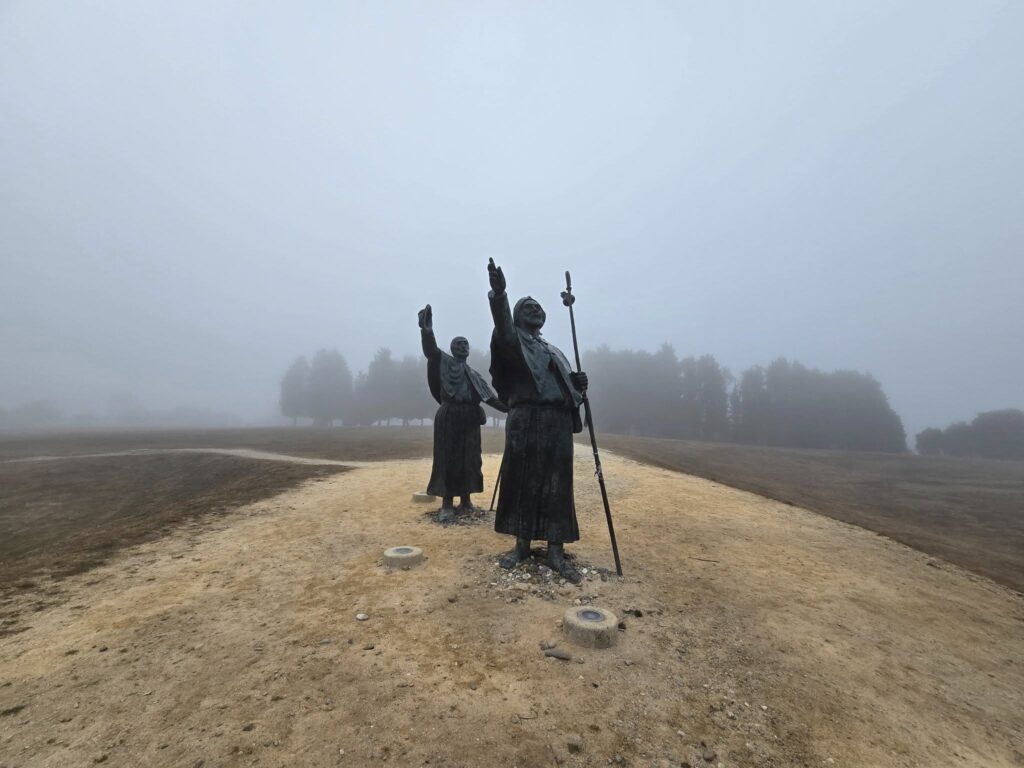
There’s Estrella Galicia and 1906 on tap in the clubroom, piped from giant tanks and lines that run all over the ceiling to the bar. There’s a barbecue night going on and a DJ playing ’80s hits, and even the middle-aged Camino walkers seem to be having a good time. It’s a curious mix of teenagers and middle-aged punters set on one last hurrah before the end of El Camino tomorrow. Most seem to be here more for the allure of Camino affairs than for the walk itself.
It’s a cross-section of the Latin language world: Italians, Portuguese, Spaniards, Mexicans, Argentinians, and some French. Very few northern Europeans and even fewer Americans. It feels like Curry Village in Yosemite, but without the granite cliffs. Everyone wears hiking boots, a North Face jacket, and Lycra shorts.
The outdoor tables are full, and the DJ has moved onto cheap Euro techno. Some Italian lads have decided to jump up and down on the piece of outdoor cement patio that serves as a dancefloor. Someone is cooking dry chicken and corn on the cob on an outdoor grill. It’s their last night on the Camino, and by God, they will make the most of it.
The End of El Camino
The next morning, we wake to pea-soup fog. We climb up to the top of the Hill of Joy, where there’s a statue of two pilgrims pointing to the spires of the Cathedral down in Compostela, but the fog is too thick to see anything but the statues and a few trees.
Soon, we’re joined by a group of middle-aged but fit walkers. They all look like successful yuppies on holiday from their marriages, and from the way they’re paired up, probably have swapped couples during the walk more than once. A few of them are French.
There’s an attractive middle-aged Mexican lady who, from the look of her North Face gear and plastic-surgery face, is probably from Polanco. She’s making duck faces as the group poses for selfies in front of the statue of the pilgrims. There’s nothing remotely religious or even strenuous about their demeanor. This is a walk in the park, and Santiago de Compostela is just a 45-minute stroll away.
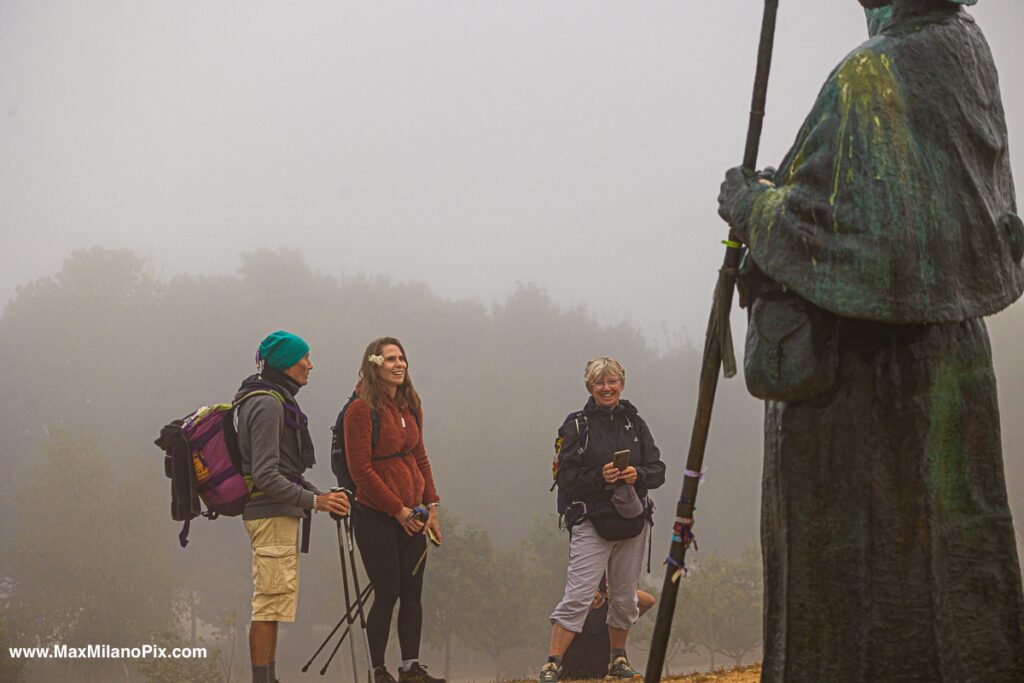
We’re followed by a horde of walkers leaving the Hill of Joy as we exit the Monte do Gozo hotel in our car. The sidewalk that leads downhill toward Santiago de Compostela is already packed with pilgrims, their walking sticks and hiking gear piled up in pelotons. They will only stop at the “Welcome to Santiago de Compostela” sign for more selfies before the anticlimactic end in the square in front of the Cathedral.
We’re in Santiago de Compostela now. Right on the square, across from the 12th-century City Hall and the Baroque church. The twin spires rise inexorably high and seem to get lost in the still-foggy morning sky.
Hundreds of pilgrims mill about in the square. Some sit on the ground, but most just wander as if waiting for something to happen. A bagpipe wails from a tunnel beside the Cathedral. Every few minutes, a new group of pilgrims joins the crowd in the square, meandering aimlessly until they find a spot for selfies and group photos.
Everyone is quiet and polite. Too quiet. Too polite. I had expected scenes of paroxysm and ecstasy as they completed their walks after hundreds of miles from France or Portugal. But these pilgrims wrapped in Lycra and North Face shells seem far too fresh to have walked more than half a day in the last ten. Everyone is too clean. Too well-groomed.
It’s a strange atmosphere, with everyone waiting for nothing to happen.
Then something happens.
An Argentinian pilgrim bursts onto the square. A ragged Che Guevara beard. Filthy t-shirt. Muddy boots. He looks like he’s actually walked here from afar. There’s a buzz of excitement as he breaks into song, tears rolling down his face. His voice is operatic. It fills the square and thunders up the Cathedral spires.
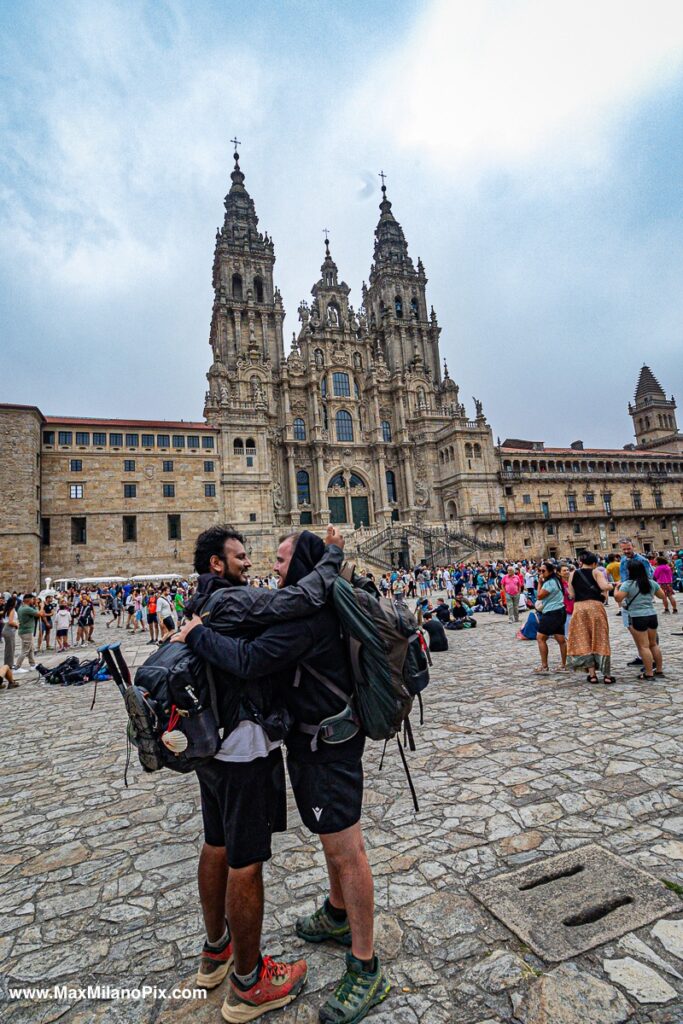
One of his companions hugs him, but the Argentinian keeps singing. It might be a tango. It might be a hymn. There’s no way to know. The crowd begins to hum, their voices adding a bass line to his wailing. The bagpipe cut sharply above it all.
It’s a sublime moment of sound and tears that rise up the spires of the Cathedral before getting lost in the fog above.
Welcome to Santiago de Compostela. The end of El Camino.
Read The Full Camino de Santiago Roadtrip Series:
El Camino de Santiago Prologue: Valencia to Cuenca
El Camino de Santiago Part 1: Cuenca to Bilbao
The Road to Santiago Part 2: La Rioja to Bayonne
The Road to Santiago Part 3: Cantabria to Galicia
Max Milano is a travel writer and photographer based in Los Angeles, California, and Valencia, Spain. His latest photography book, Mexico City Noir, Life Under The Volcanoes, is Available on Amazon. His photographs are available at MaxMilanoPix.
Practical Information
Planning a road trip in Spain? Here are some practical tips to make your Camino (or any Iberian road trip) smoother, cheaper, and more enjoyable.
Transportation
- Car rentals: AutoEurope consistently offers some of the best rates in Europe. Always spring for the zero-deductible insurance option. Spanish roads are full of narrow medieval streets and hidden stone curbs.
- Last-minute rentals: Expedia often has good deals if you suddenly decide to extend your trip.
- Long-term rentals: For trips of a month or more, try OKMobility. Be aware that they may sometimes request an International Driver’s Permit (IDP). You can easily get an International Driver’s Permit (IDP) at your local AAA office before leaving the U.S.
- Navigation: Google Maps works well in cities, but in rural areas like Galicia or Castilla, it can become confused by old farm roads. Download offline maps before you go.
Accommodation
- We skip Airbnb for many reasons. On our latest El Camino road trip, we used Google Maps to find hotels along our route and called them directly the day before or even the same day. Google usually links to the hotel’s website or booking page.
- Pro tip: Always compare the hotel’s direct price with that of Expedia or Booking.com. Sometimes the hotel offers a cheaper “direct booking” discount; other times, the platforms offer a better deal. Check both.
- Camino towns: Outside of big cities, expect simple pensiones or pilgrim hostels. They’re basic, but cheap and full of character.
Food
- Spain runs on strict meal times. Lunch (the big meal) is from about 1:30 to 3:30 PM. Dinner rarely starts before 8:30 PM.
- In small towns, arriving outside these hours often means no food until kitchens reopen. Always carry snacks or a picnic lunch.
- Supermarkets to the rescue: Carrefour, Mercadona, and Gadis offer excellent ready-made takeout options, including tortilla española, fresh bread, local cheeses, and wine that costs less than bottled water.
Money
- Spain is card-friendly, but some tiny bars and gas stations still prefer cash. Keep some cash handy.
- ATMs: Avoid Euronet; they charge insane fees. Stick with ATMs attached to reputable banks, such as Santander, BBVA, or Caixa.
Other Essentials
Packing: A light rain jacket is essential in Galicia, even in summer. Comfortable walking shoes are non-negotiable.
Gas stations: Many are self-service with payment machines. Use Carrefour gas stations to earn points; it will help cover the cost of many of your snacks during a long road trip.
Language: In big cities, you’ll find English speakers. In rural Galicia or Castilla, don’t count on it. A few phrases in Spanish (or Galician!) go a long way.
Heads up: Some (not all) of the links above are affiliate links. That means if you book a car, hotel, or tour through them, I may earn a small commission, it helps keep the road trip going and the stories free for you.